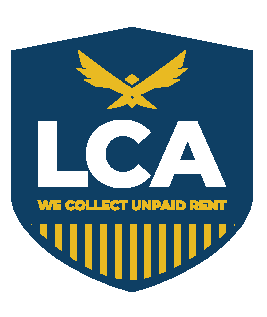Spring has sprung in Connecticut, and with the arrival of warmer weather comes the ideal time for landlords and property managers to refresh their rental properties. A fresh coat of paint can breathe new life into a tired space, attract high-quality tenants, and ultimately boost your return on investment (ROI). This guide delves into the benefits of spring painting for Connecticut rentals, offers practical tips for selecting colors, navigating regulations, and choosing the right contractor, and explores strategies to maximize the value of your investment.
Why Paint in the Spring?
Connecticut’s spring season boasts several advantages for painting rental properties:
- Pleasant weather: Spring offers comfortable temperatures for both painters and tenants. This allows for efficient work without compromising comfort levels.
- Improved light: Longer daylight hours during spring provide better natural light conditions for painters to achieve a flawless finish.
- Tenant turnover: Spring often coincides with lease end dates, making it a prime opportunity to paint vacant units before new tenants arrive.
- Curb appeal: A fresh coat of paint enhances the interior and exterior of your property, making it stand out in the spring rental market.
Choosing the Right Colors for Your Connecticut Rentals
Selecting paint colors for your rental properties requires a balance between aesthetics and practicality. Here are some tips for Connecticut landlords:
- Neutral Palette: Opting for neutral colors like beige, light gray, or white creates a clean and spacious feel that appeals to a wider range of tenants.
- Consider Local Trends: While neutral is a safe bet, research popular color schemes in your Connecticut neighborhood. Subtle nods to local trends can add a touch of personality without being overwhelming.
- Durability and Maintenance: Choose paints formulated for high traffic areas, especially in kitchens, bathrooms, and hallways. Opt for paints with a washable finish for easier cleaning and maintenance by tenants.
- Compliance with Lead Paint Regulations: Connecticut has strict regulations regarding lead paint in pre-1978 housing. Be sure to test paint for lead content before painting and hire a certified lead abatement contractor if necessary (CT Department of Public Health).
Understanding Lead Paint Regulations in Connecticut
Landlords in Connecticut have a legal responsibility regarding lead paint in rental properties built before 1978. Here’s a breakdown of key regulations:
- Disclosure Requirements: Landlords must provide tenants with an EPA-approved lead paint disclosure form before entering into a lease agreement.
- Lead Paint Testing: If a tenant requests testing for lead paint, landlords must comply within a reasonable timeframe.
- Lead Abatement: If lead paint hazards are identified, landlords must take steps to address them using a certified lead abatement contractor.
Navigating Tenant Communication and Unit Access
Clear communication with your tenants is crucial when planning a painting project. Here are some best practices:
- Provide Advance Notice: Inform tenants well in advance about the painting schedule, potential disruptions, and access requirements.
- Offer Alternative Arrangements: If possible, consider offering temporary accommodation for tenants who may be significantly impacted by the painting project.
- Be Respectful and Accommodating: Maintain open communication with tenants throughout the process and address any concerns they may have.
Do I have to wait until the tenant leaves to paint?
In most cases, you don’t necessarily have to wait for the tenant to leave before painting a Connecticut rental property.However, there are some key considerations for ensuring a smooth process and respecting tenant rights:
- Lease Agreement: Review your lease agreement with the tenant. Some leases may have specific clauses regarding access for maintenance and repairs, including painting.
- Notice Requirements: Connecticut law generally requires landlords to provide tenants with reasonable notice (often 24-48 hours) before entering the unit for non-emergency repairs or maintenance. This includes painting.
- Tenant Disruption: Painting can be disruptive for tenants. Be mindful of the scope of the project and try to schedule it at a convenient time, minimizing disruption to their daily routines.
- Alternative Arrangements: For extensive painting projects that might significantly inconvenience tenants,consider offering alternative arrangements. This could involve allowing them temporary use of another vacant unit or providing a rent reduction for the duration of the inconvenience.
Finding the Right Painting Contractor for Your Connecticut Rentals
Selecting a reputable and qualified contractor is essential for a successful painting project. Here are some tips:
- Get Multiple Quotes: Obtain quotes from at least three licensed and insured painting contractors in your area.
- Check References: Contact past clients and ask about their experience with the contractor’s work ethic, quality, and communication.
- Review the Contract: Ensure the contract clearly outlines the scope of work, materials to be used, cost breakdown, warranty information, and payment schedule.
- Lead Certification: If your property was built before 1978, verify that the contractor has the required lead abatement certification.
Maximizing ROI with Strategic Painting for Connecticut Rentals
Investing in quality paint and professional painters can significantly impact the value of your rental property. Here are some strategies to maximize your ROI:
- Focus on High-Impact Areas: Prioritize painting high-visibility areas like the front door, living room, and kitchen for the most significant visual impact.
- Consider Curb Appeal: A fresh coat of paint on the exterior significantly enhances the property’s street presence, attracting potential tenants. A fresh coat inside will help close the sale!
- Maintain Professional Finish: A well-painted unit sets the tone for a well-maintained property, allowing you to potentially command higher rents.
- Reduce Maintenance Costs: High-quality paint lasts longer and is easier to clean, minimizing future maintenance needs for minor scuffs and marks.
Conclusion: Spring Painting – A Wise Investment for Connecticut Landlords
By taking advantage of the spring season and following these tips, Connecticut landlords and property managers can transform their rental properties into attractive and well-maintained spaces. This not only improves tenant satisfaction and reduces vacancy rates but also translates to a higher return on investment. Remember, a fresh coat of paint is a spring investment that keeps on giving throughout the year.
Here are some additional points to consider:
- Factor in Local Market Trends: Research rental prices in your area to understand the potential impact of painting on rental income. A well-painted unit may justify a slight rent increase.
- Document the Work: Take high-quality photos of the freshly painted unit to showcase it in online listings and attract high-quality tenants.
- Maintain a Regular Painting Schedule: Establish a regular painting schedule for your rental properties, perhaps every 2-3 years, to maintain a fresh and inviting atmosphere.








